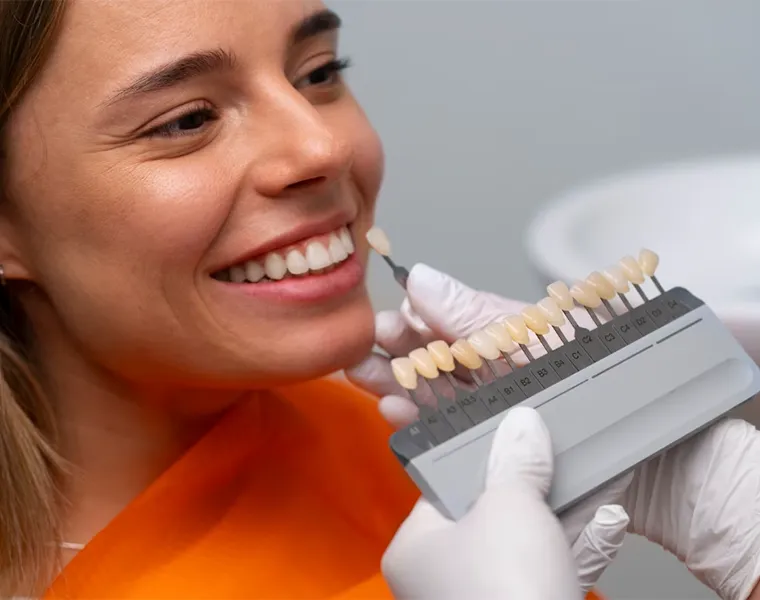How to make a dental crown? The size of filed teeth or implants is measured and a tooth is prepared according to the patient’s oral and dental structure. Then, these crowns are placed in the patient’s mouth using special adhesives.
How to make a dental crown? The answer to this question may vary depending on the patient’s needs and expectations. Factors such as the condition of the crown and the existing tooth, oral and dental health, and whether the crown is applied to the front or back teeth can differentiate the process. Dental crowns can be made from various materials like porcelain, ceramic, or resin, and can be in natural tooth colors. The crowning process not only enhances aesthetics but also improves the functionality of the tooth.
The basic steps of the crown procedure are as follows:


How is a Dental Filling Crowned?
Teeth can wear down for various reasons, leading to color loss or issues like decay or fractures. Crowning is used to address these issues, aiming to protect the tooth root and restore the teeth to their original aesthetic and functional state. Implant or filling applications are also completed by crowning.
How Long Does It Take to Crown a Filled Tooth?
Crowning completed filled teeth ensures their long-term, healthy, and functional use. The crown process usually consists of two main visits. During the first visit, the teeth are prepared, and measurements are taken. In the second visit, the dental crown is placed. This process often takes a few weeks to complete. Once the entire process is completed, a check-up is recommended at a time determined by the dentist, and follow-up visits are suggested every six months.
How many days does ıt take to fit a crown? The preparation and proper placement of the crown can usually take a few weeks. This duration can vary depending on the type of crown selected and the number of crowns being prepared.
When making a dental crown, the dentist first examines the teeth and decides if they are suitable for crowning. If procedures like implants or laminates are involved, it is also determined at this stage whether crowning can be done without cutting the teeth. Then, the dental measurements are taken, and these measurements are processed using CAD/CAM technology to prepare the crown.
Does getting a crown hurt? Local anesthesia is used during the crowning process, so there is no pain experienced during the procedure. Mild sensitivity or discomfort may occur after the procedure, which usually subsides within a few days.
Options for crowns include porcelain laminate, full ceramic crowns, veneers, zirconium, and dental bridges. Laminate teeth, with their thinner structures, stand out for front teeth or cases where a thin crown is sufficient. Zirconium, with its durable structure, is a long-lasting treatment option for molar teeth.
Libredent is a dental clinic where various oral and dental treatment applications are performed. You can contact us for dental crowns and other treatment options.











